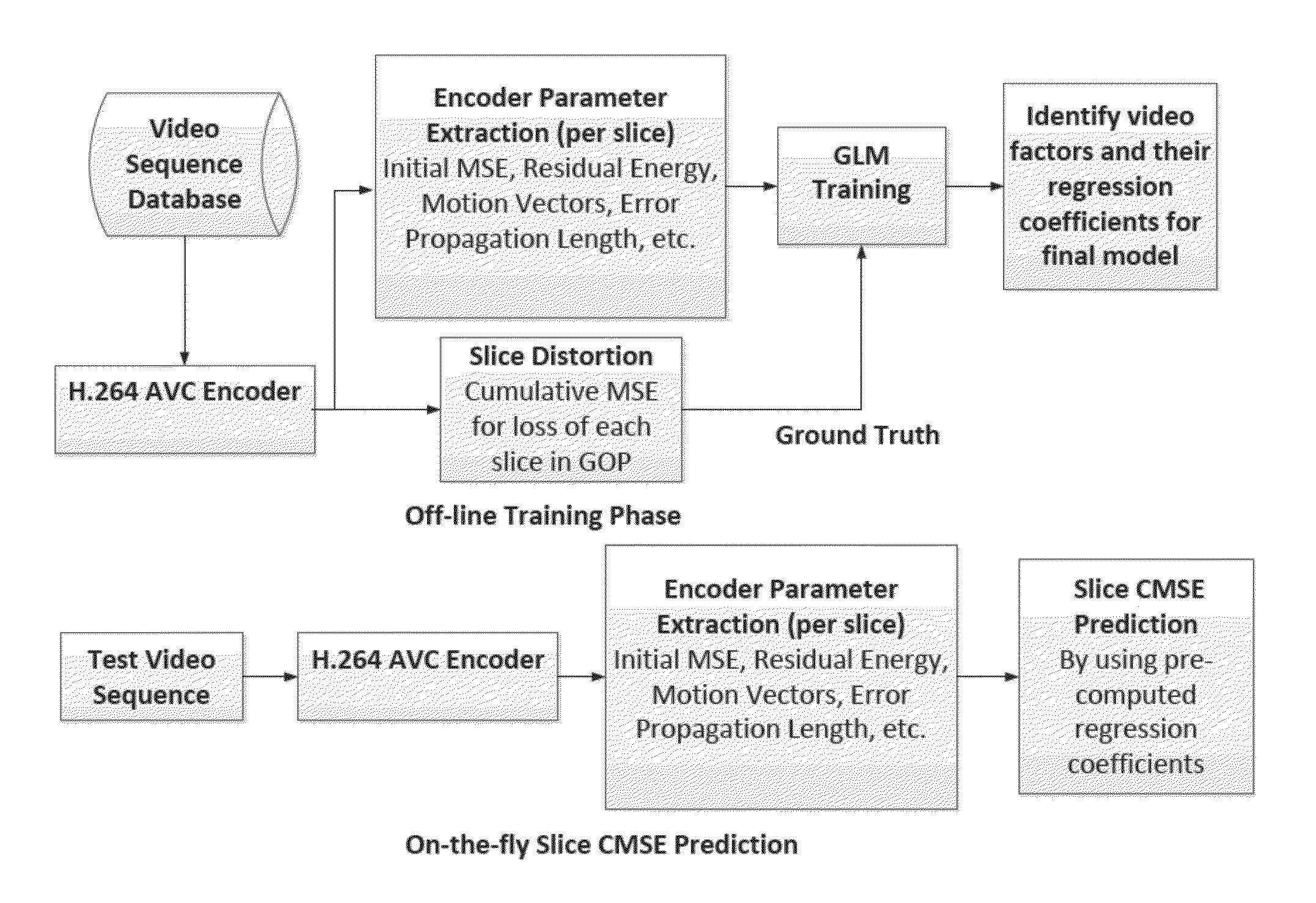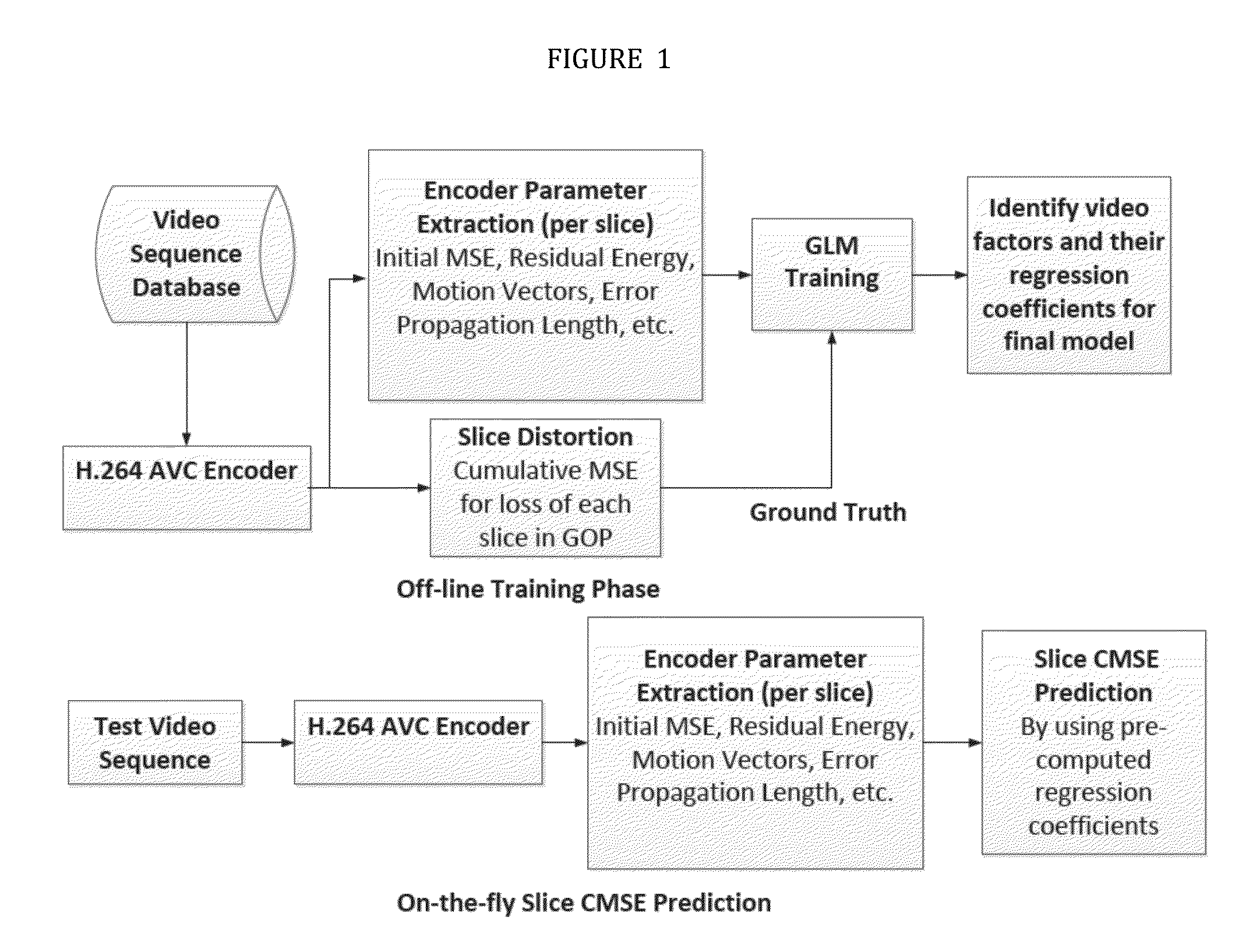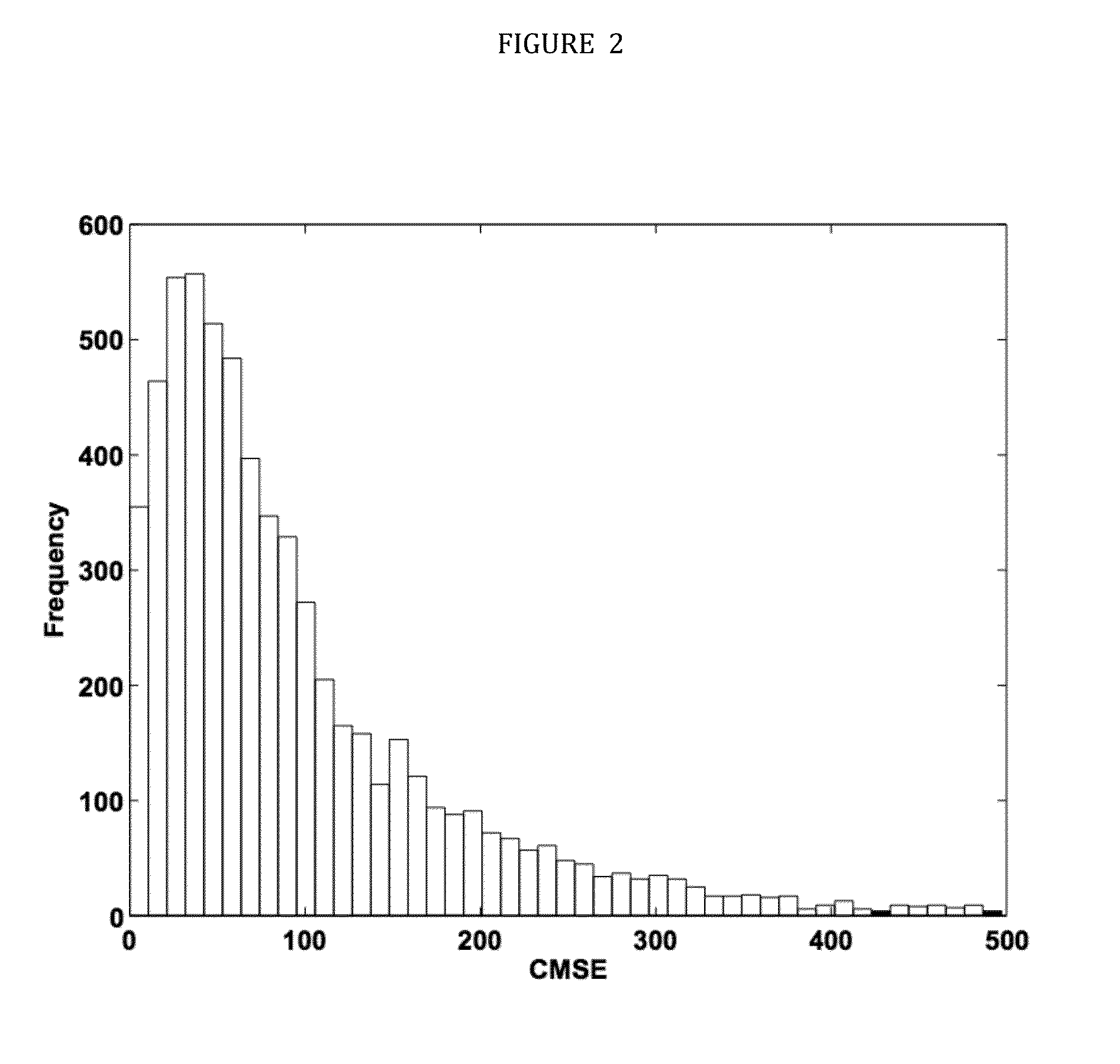Slice priority prediction system for H.264 video
a technology of priority prediction and h.264, applied in the field of h.264 priority prediction system, to achieve the effect of reducing complexity and increasing efficiency of schem
- Summary
- Abstract
- Description
- Claims
- Application Information
AI Technical Summary
Benefits of technology
Problems solved by technology
Method used
Image
Examples
Embodiment Construction
[0048]Definitions
[0049]The following definitions are provided as an aid to understanding the detailed description of the present invention.
[0050]The word “slice” or phrase “video slice” shall mean a spatially distinct region of a frame that is encoded separately from any other region in the same frame.
[0051]The term “Group of Pictures” (GOP) shall mean the order in which intra- and inter-frames are arranged. The GOP is a group of successive pictures within a coded video stream. Each coded video stream consists of successive GOPs. From the pictures contained in it, the visible frames are generated.
[0052]The term “Generalized Linear Model” (GLM) means a flexible generalization of ordinary linear regression that allows for response variables that have other than a normal distribution. The GLM generalizes linear regression by allowing the linear model to be related to the response variable via a link function and by allowing the magnitude of the variance of each measurement to be a func...
PUM
 Login to View More
Login to View More Abstract
Description
Claims
Application Information
 Login to View More
Login to View More - R&D
- Intellectual Property
- Life Sciences
- Materials
- Tech Scout
- Unparalleled Data Quality
- Higher Quality Content
- 60% Fewer Hallucinations
Browse by: Latest US Patents, China's latest patents, Technical Efficacy Thesaurus, Application Domain, Technology Topic, Popular Technical Reports.
© 2025 PatSnap. All rights reserved.Legal|Privacy policy|Modern Slavery Act Transparency Statement|Sitemap|About US| Contact US: help@patsnap.com



